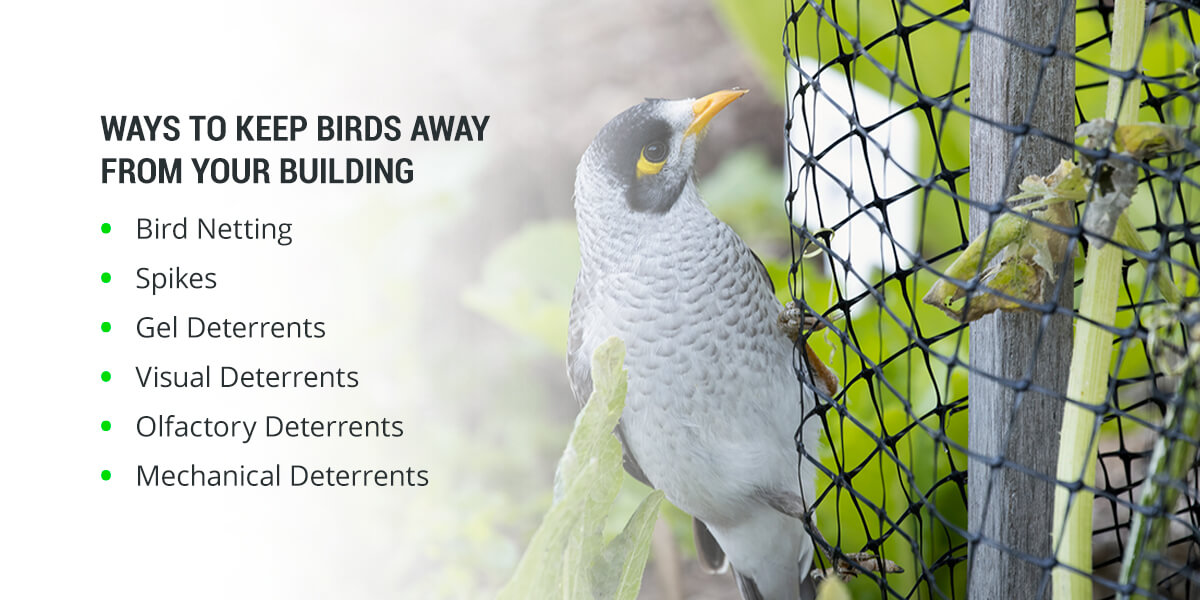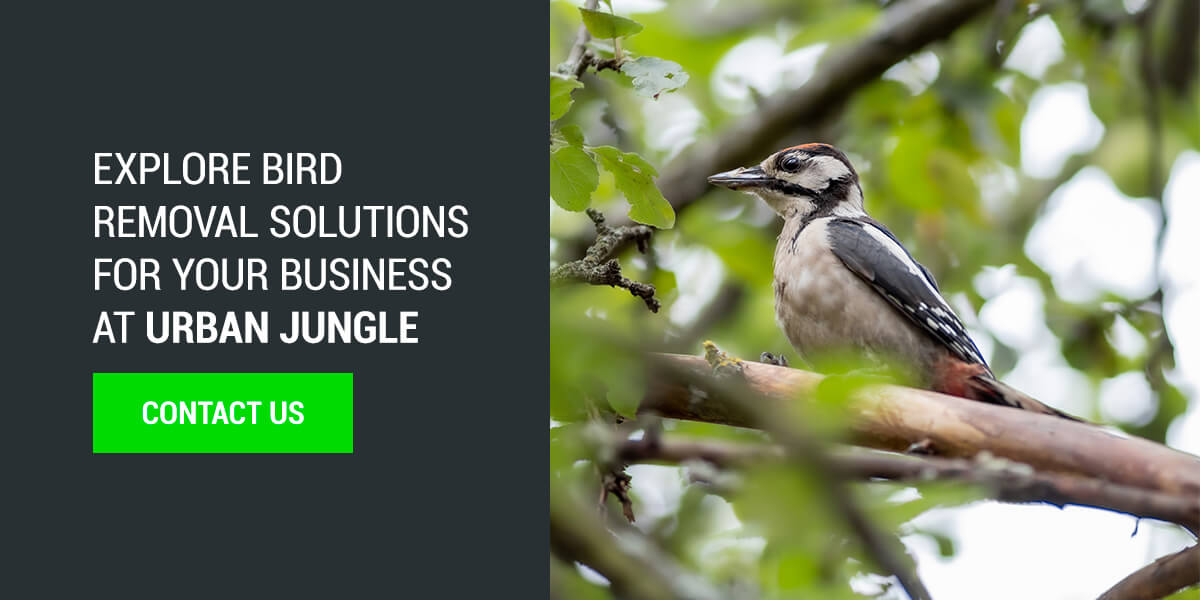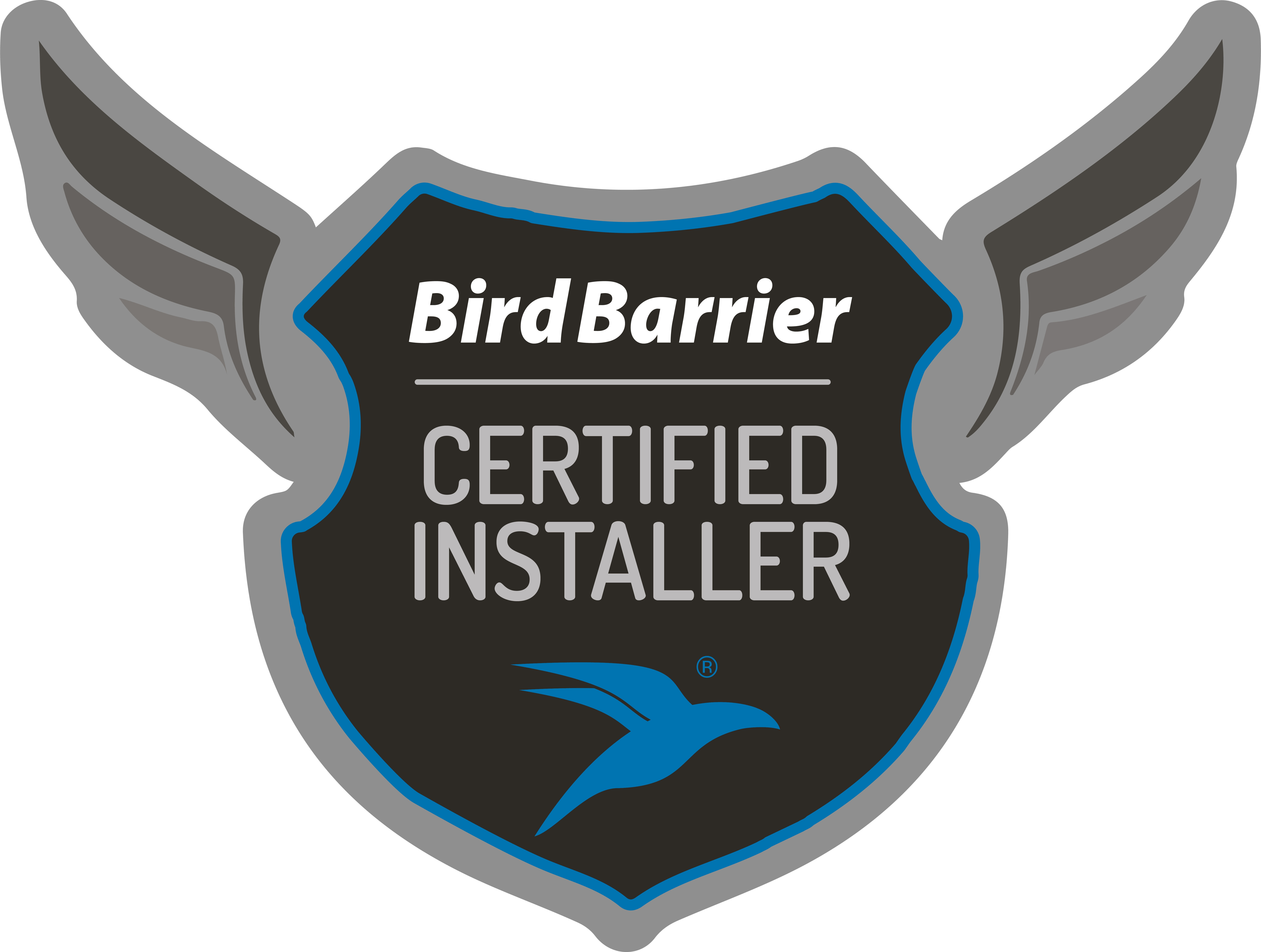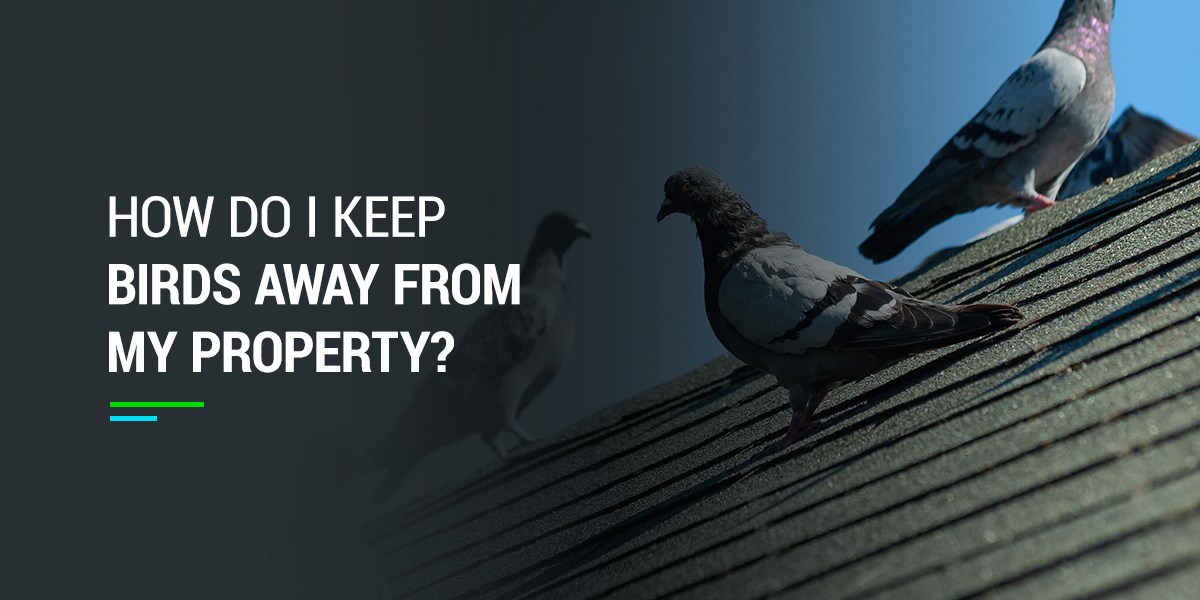Birds are beautiful creatures that are pleasant to watch, but they can damage buildings depending on where they nest and how they behave. Birds can damage solar panels, insulation and other components of your facility, so it’s important to deter them as much as possible. Various commercial bird control options can safely and effectively deter birds from your property without harming them.
Why Birds Hang out Around Your Business
Birds often nest in spaces near food and water sources such as trees, fountains, ponds and trash containers. It’s also common to find birds near electrical items such as light fixtures if they are seeking warmth. They find places to build nests with determination because their instinct is to protect their chicks with a safe home.
Birds often build nests on and around commercial buildings because of their large size and abundant safe nesting spaces. Birds prefer to sit high where they can view their surroundings. This is why you will often see them on ledges, but you can also find them along covered overhangs, under HVAC units, in ductwork entrances and in other spaces.
What Problems do Birds Cause and What Is the Best Bird Deterrent?
Once a bird choose a safe place to build a nest, they become very attached to that spot, making it difficult to move them elsewhere. It’s important to utilize bird deterrents so you can safely relocate birds before they cause the following issues:
- Unsanitary Messes: When birds nest, they often leave feathers, droppings and nesting materials that can accumulate on or around your building. This can create unsightly views and pose health risks to people.
- Aggression: Birds can become aggressive when they feel their chicks are in danger, so they may try to attack customers or clients who are walking through the door or around the building.
- Safety hazards: Birds create safety hazards when they build nests in spaces such as chimneys and dryer vents.
- Building damage: Birds can cause damage to roof eaves, attics and solar panels.
- Invasive species: Some invasive bird species can disrupt and overtake native birds’ territories. Invasive species are a serious environmental threat.
The European Starling and House Sparrow are common invasive bird species that threaten the native songbird species in Texas. No matter where your business is located, birds can create problems, and bird damage can cost businesses millions of dollars a year.
The Migratory Bird Treaty Act prevents anyone including business owners from harming native birds or disturbing existing nests with eggs or hatchlings on their property (commercial buildings or residential) until the nests become dormant. Once any birds build a nest on your commercial property, it’s too late to remove it. This is why it’s important to prevent nesting before it occurs. The best bird deterrent type for any business depends on various factors such as the bird species, climate, building location, season and time of day. To protect your business, consider the following ways to keep birds away from your building:
Bird Netting
Bird netting acts as a barrier to keep birds away from your building. This strong and durable bird exclusion barrier is often made of stainless steel installation hardware and polyethylene twine, and it’s almost invisible. It’s ultraviolet (UV) light resistant, and it will not absorb water or rot, so you can count on it to last long. It can protect any enclosed or semi-enclosed area such as loading docks, commercial buildings, architectural entryways, rooftops, courtyards, storefront signs, balconies, open beam structures and more.
Bird netting comes in various shades and sizes. You can choose a shade that best matches your building so that it remains mainly invisible and select a size based on the type of birds you need to deter. For example, if you’re wondering how to keep pigeons away from your business, 2-inch mesh will do the job. Four-inch mesh is great for keeping larger birds like seagulls out, while three-fourth-inch mesh blocks smaller birds like swallows and sparrows.
Spikes
Spikes are harmless bird deterrents that work great to deter pigeons. Made from stainless steel or plastic, spikes point upward to make it difficult for birds to land. When they do land, the spikes prevent them from roosting comfortably. Spikes can sit on ledges, parapets, gutters, signs and more. Spikes are ideal for medium-sized to large birds. However, some of the smaller species, like sparrows, will utilize spikes to secure and build a nest.
Gel Deterrents
Optical gel repels birds by affecting their smell, sight and touch senses. The gel’s shape appears unsafe to birds because it resembles fire or smoke to their eyes, so they will avoid it. The gel also has a strong peppermint oil and citronella scent, which is pleasant to people but displeasing to birds. Additionally, the gel is sticky, so if birds do touch it, they will fly away to avoid the sticky sensation.
The optical gel can be applied to signs, ledges, beams, skylights, roofs and more. The gel dishes are placed strategically and secured using a magnetic, zip-tie, or glue the dishes to the desired area. The optical gel is an environmentally friendly bird repellant due to its all-green ingredients. The gels dishes must be replaced periodically to ensure effectiveness.
Visual Deterrents
Visual bird deterrents include decoys that resemble owls and other predators to scare birds away. They can also include holographic and reflective materials such as optical gel, scare tape, fly away lasers and other devices. Visual bird deterrents use motion, bright colors, flashing lights and other danger signs to frighten birds.
Visual deterrents don’t work as an alternative to other methods, but when you combine them with additional deterrents, they work well to repel birds. They function best when you use them as soon as possible after birds settle on a space. You should also remove any water or food sources from the area to further prevent birds from returning.
Olfactory Deterrents
Olfactory bird deterrents are automated time-release aerosol substances that affect birds’ olfactory senses. They are non-toxic, eco-friendly substances that irritate birds’ pain centers and create an uncomfortable sensation. Once birds experience this type of deterrent, they will gradually learn to avoid the area. This deterrent type is great for open areas and large properties but must be reapplied periodically to remain effective.
Mechanical Deterrents
Mechanical deterrents produce sounds, sensations and other obstacles for birds. Electrified tracks deliver a memorable shock to birds when they land. The shock is not painful but does elicit a distress call from the surprised bird. This distress call works to scare away other nearby birds and it prompts the birds to avoid the area as well as the tracked surfaces. The electrified track is low profile and nearly invisible from a distance as it conforms to any surface.
Reflective deterrents spin and reflect light, causing birds to deviate and fly elsewhere. This type can be either motorized or wind-powered. Audio deterrents produce warning sounds such as frightening noises or distress calls to falsely alert birds of danger. Audio deterrents work best if you time the sounds to match birds’ behavior. Birds will eventually learn to avoid the area when they start to correlate their presence with the warning sounds.
Explore Bird Removal Solutions for Your Business
Birds are beautiful but incredibly detrimental to businesses and commercial properties. Thankfully, many bird deterrent options can keep them away from your business. Looking to remove pigeons or other birds from your building for good? At Urban Jungle Wildlife Removal, our Bird Barrier certified team will help you safely remove birds from your property and help you prevent future issues. Contact Urban Jungle to learn more about our professional bird control products and services.
Call Now for Wildlife Removal Services➔





